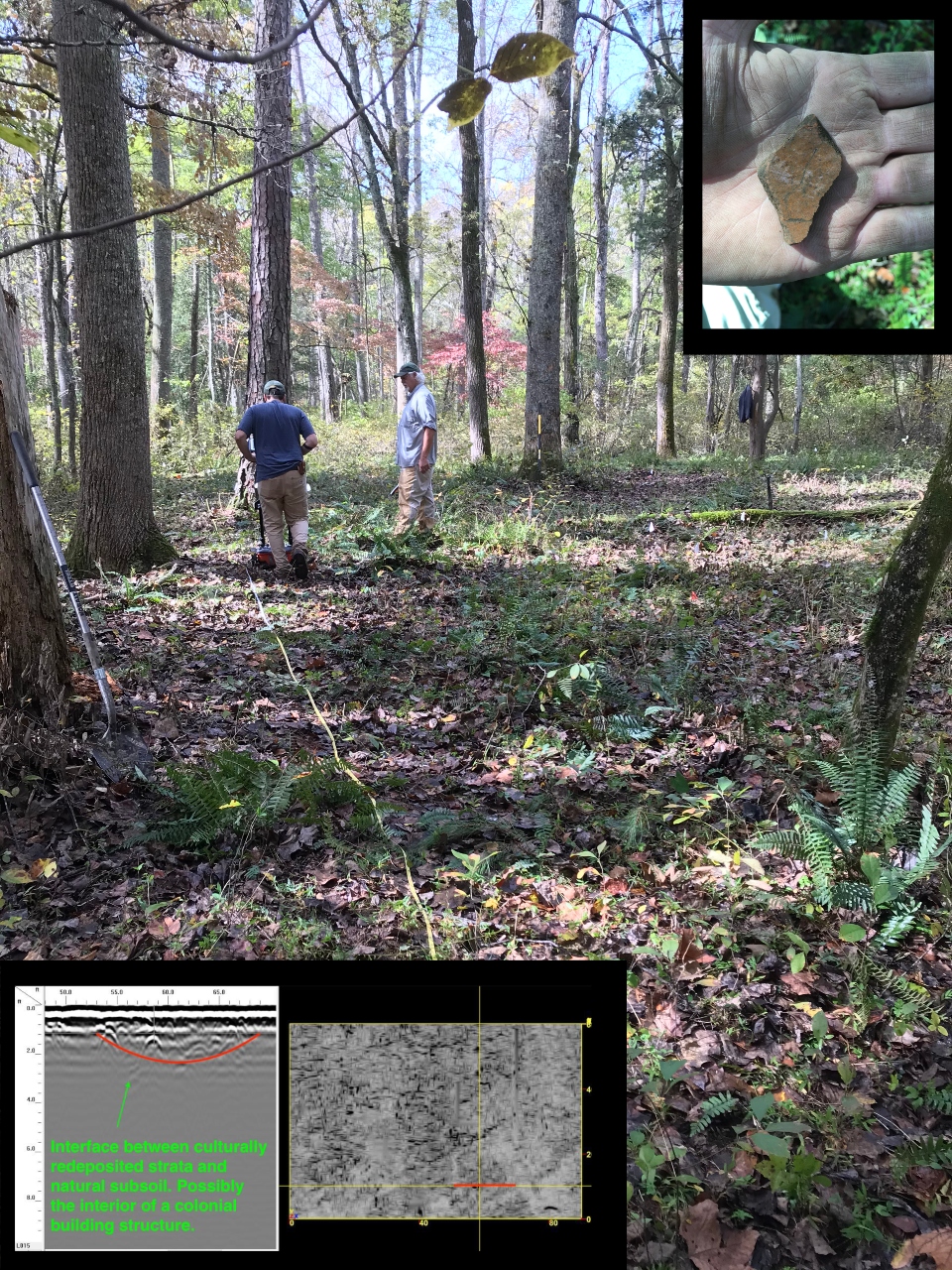October Feature: Bob Chartrand and VA Archaeology Month
For Virginia Archaeology month we spotlight Bob Chartrand, one of our MA students who works locally on Virginia archaeology. Here is what Bob has to say about his pathway to studying archaeology in Virginia:
I got involved with archaeology in 2011 as an undergraduate at Salem State University. While majoring in geology, I continued my interest in History by taking an Archaeology 101 course with W&M Alumni Professor Emerson Baker, specializing in seventeenth-century New England history and archaeology. As a Research Assistant, I collaborated on several cross-departmental research projects using Ground Penetrating Radar on colonial sites throughout northern New England, including Strawberry Banke, Green Dragon Tavern Site, Spencer-Pierce-Little Farm, and the Bath Maritime Museum Blacksmith site.
Here in Virginia, I am currently studying a 18th and 19th-century plantation site named New Quarter in York County. My research applies Ground Penetrating Radar (GPR) to identify buried architectural features. This data will provide a better understanding of the New Quarter plantation landscape by interpreting differences and similarities of the plantation’s spatial layout with other regional, contemporary archaeological sites. What is so essential about archaeology is that it gives voice to those neglected in the historical record. Material culture can narrate the lived-experience of those from the past within a space or place. Today, archaeology has been a useful tool for building community identities by giving a sense of belonging by linking the past into the present. Besides working at Jamestown Rediscovery since 2012, I have worked on several other archaeological sites within Virginia. These include the Eyreville site, Basilica of Saint Mary site, Timberneck Creek site, Indian Pete site, Urbanna Creek Site, Toddsbury site, First Baptist Church site, and the Jamestown Beach Blockhouse site, to name a few.
I appreciate that Virginia archaeology has a wide-range of history to be studied, from Native American histories up to the 20th century. Most important is Virginia's strong commitment to preservation in place for our cultural resources. Another perk is the abundance of archaeology programs involving descendent communities and general educational outreach to help us better understand the past. I would like to bring awareness to climate change's progressing impact on our state’s cultural sites. Archaeological sites across the Commonwealth are eroded along coastlines, inundated in lowlands, or washed away from runoff events. Preserving sites in these environmental zones should be of the utmost concern before these resources are lost forever.

Archaeological survey at the New Quarter site in York County, image provided by Bob Chartrand.














